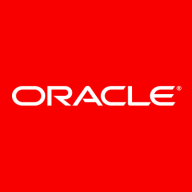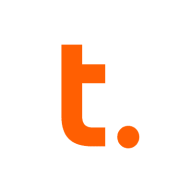

Teradata and Oracle Multitenant compete in the enterprise database management category. Teradata has an edge in scalability and analytics, while Oracle Multitenant excels in database management with pluggable databases.
Features: Teradata stands out with massive parallel processing and an advanced optimizer for large datasets and complex queries. Its analytics capabilities support business insights and rapid data processing, ideal for extensive BI applications. The shared-nothing architecture ensures performance consistency as it scales. Oracle Multitenant's pluggable databases streamline upgrades, consolidations, and resource allocation, allowing multiple databases to share a hardware instance efficiently.
Room for Improvement: Teradata faces challenges in high transaction processing and concurrency; user feedback suggests enhancing cloud integration and expanding capabilities for unstructured data. Oracle Multitenant needs better backup and recovery processes and improved integration with Oracle Audit Vault, alongside smooth upgrades for multitenant structure adoption.
Ease of Deployment and Customer Service: Teradata supports on-premises, public, and hybrid cloud deployments with generally well-regarded customer service, although response time could improve. Oracle Multitenant offers flexible on-premise and hybrid deployments, receiving praise for customer service, but pricing is often criticized.
Pricing and ROI: Teradata is premium-priced but valued for its performance in data warehousing; though pricing flexibility has been introduced, it still leads some to seek alternatives. Oracle Multitenant is also costly, fitting large enterprises better, yet its architecture is valued for long-term ROI, balancing cost and functionality.
| Product | Market Share (%) |
|---|---|
| Teradata | 4.2% |
| Oracle Multitenant | 0.9% |
| Other | 94.9% |


| Company Size | Count |
|---|---|
| Small Business | 6 |
| Midsize Enterprise | 5 |
| Large Enterprise | 9 |
| Company Size | Count |
|---|---|
| Small Business | 26 |
| Midsize Enterprise | 12 |
| Large Enterprise | 50 |
Oracle Multitenant - an Oracle Database 12c Enterprise Edition option – introduces a new architecture that enables customers to easily consolidate multiple databases, without changing their applications. This new architecture delivers all the benefits of managing many databases as one, yet retains the isolation and resource prioritization of separate databases. In addition, Oracle Multitenant enables rapid provisioning and upgrades, and fully complements other options including Oracle Real Application Clusters and Active Data Guard.
For more information on Oracle Multitenant, visit Oracle.com
Teradata is a powerful tool for handling substantial data volumes with its parallel processing architecture, supporting both cloud and on-premise environments efficiently. It offers impressive capabilities for fast query processing, data integration, and real-time reporting, making it suitable for diverse industrial applications.
Known for its robust parallel processing capabilities, Teradata effectively manages large datasets and provides adaptable deployment across cloud and on-premise setups. It enhances performance and scalability with features like advanced query tuning, workload management, and strong security. Users appreciate its ease of use and automation features which support real-time data reporting. The optimizer and intelligent partitioning help improve query speed and efficiency, while multi-temperature data management optimizes data handling.
What are the key features of Teradata?In the finance, retail, and government sectors, Teradata is employed for data warehousing, business intelligence, and analytical processing. It handles vast datasets for activities like customer behavior modeling and enterprise data integration. Supporting efficient reporting and analytics, Teradata enhances data storage and processing, whether deployed on-premise or on cloud platforms.
We monitor all Relational Databases Tools reviews to prevent fraudulent reviews and keep review quality high. We do not post reviews by company employees or direct competitors. We validate each review for authenticity via cross-reference with LinkedIn, and personal follow-up with the reviewer when necessary.